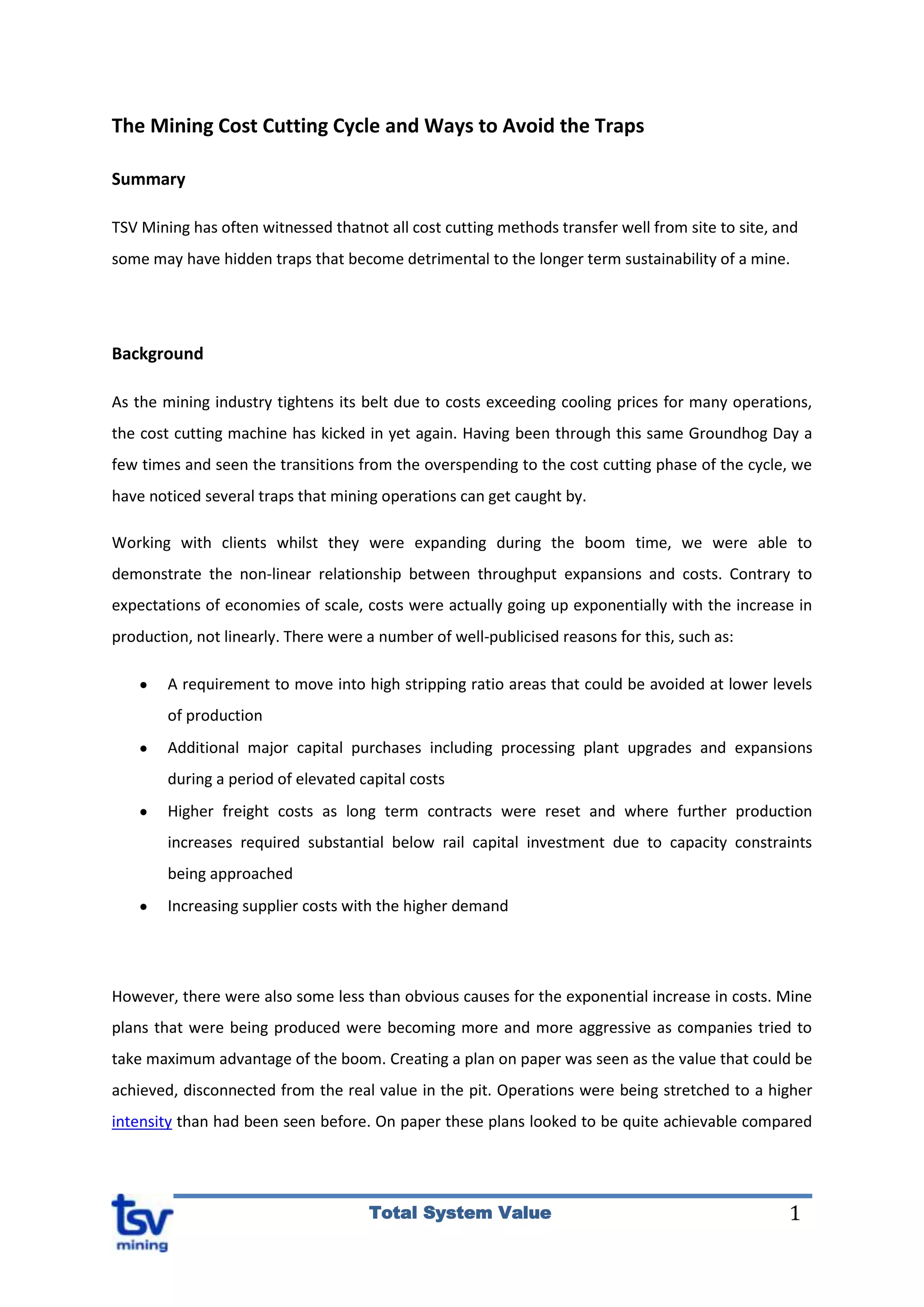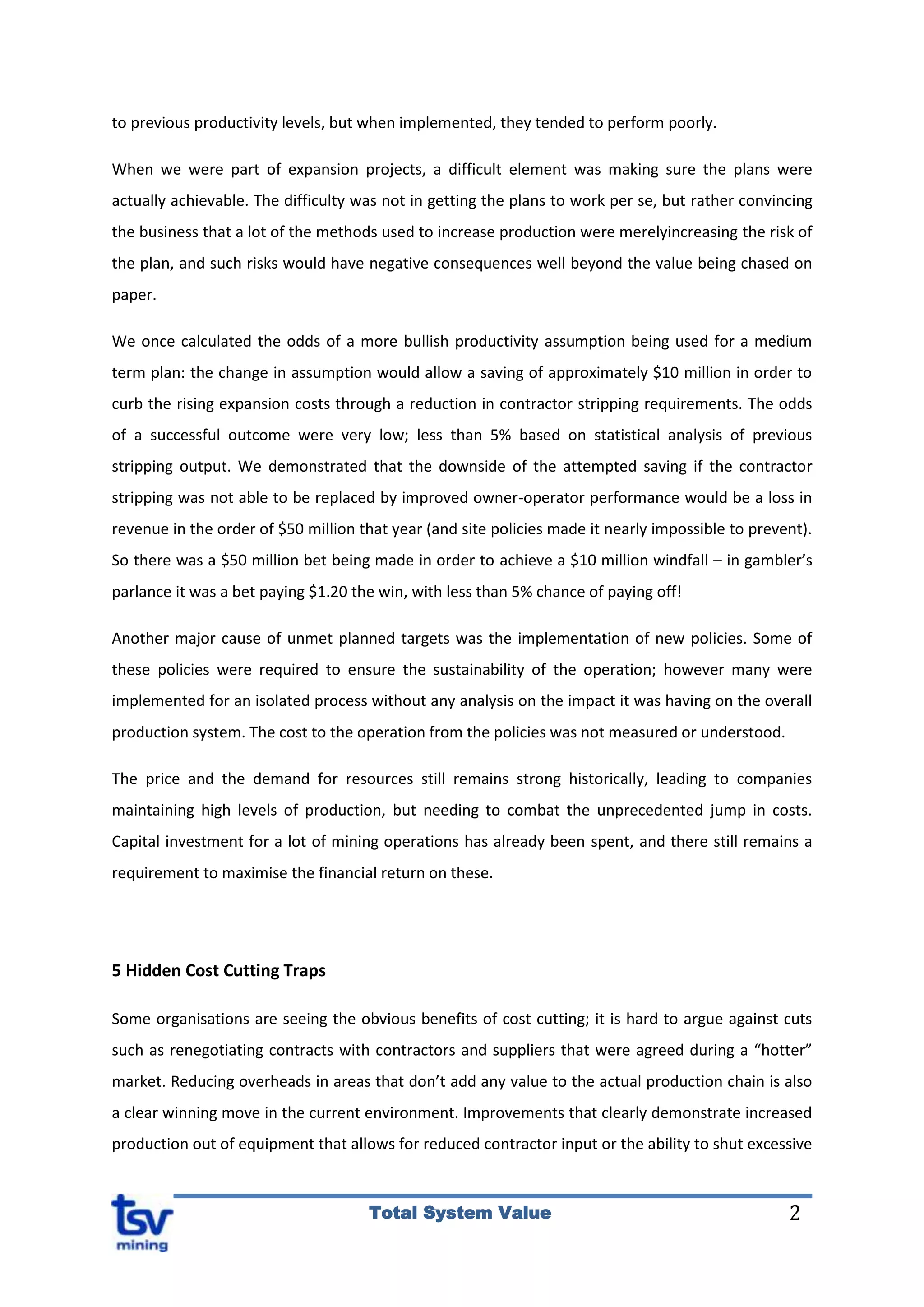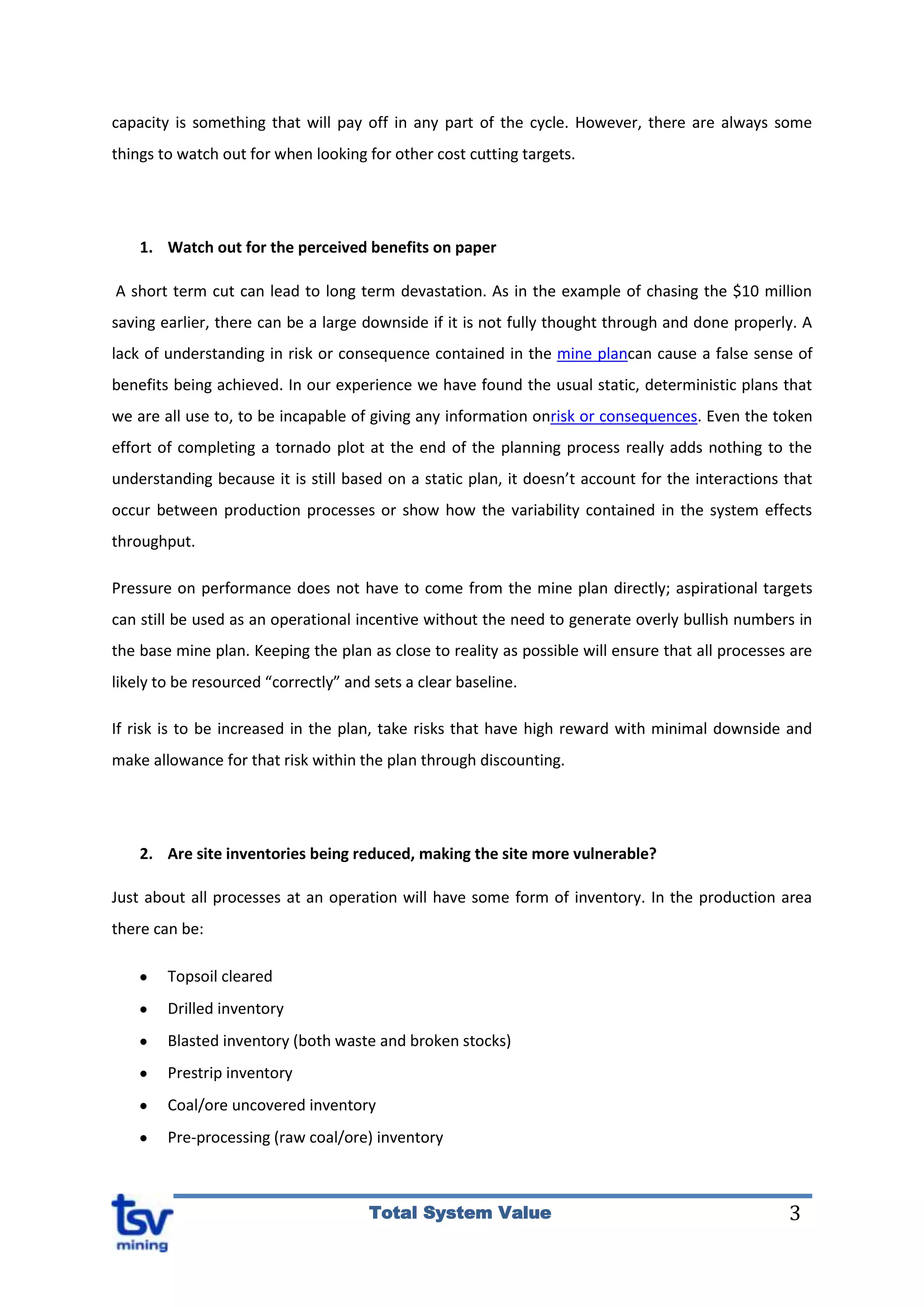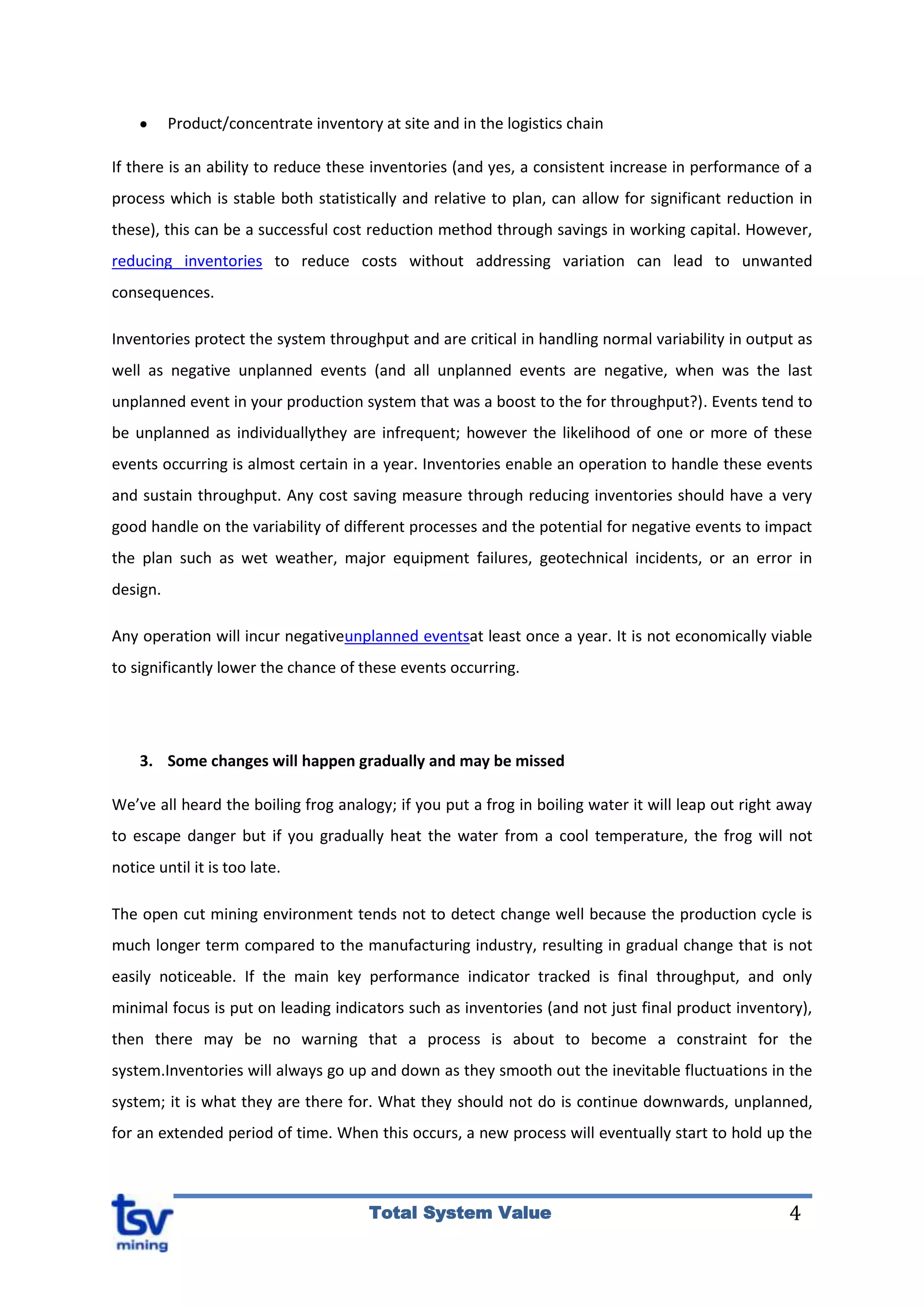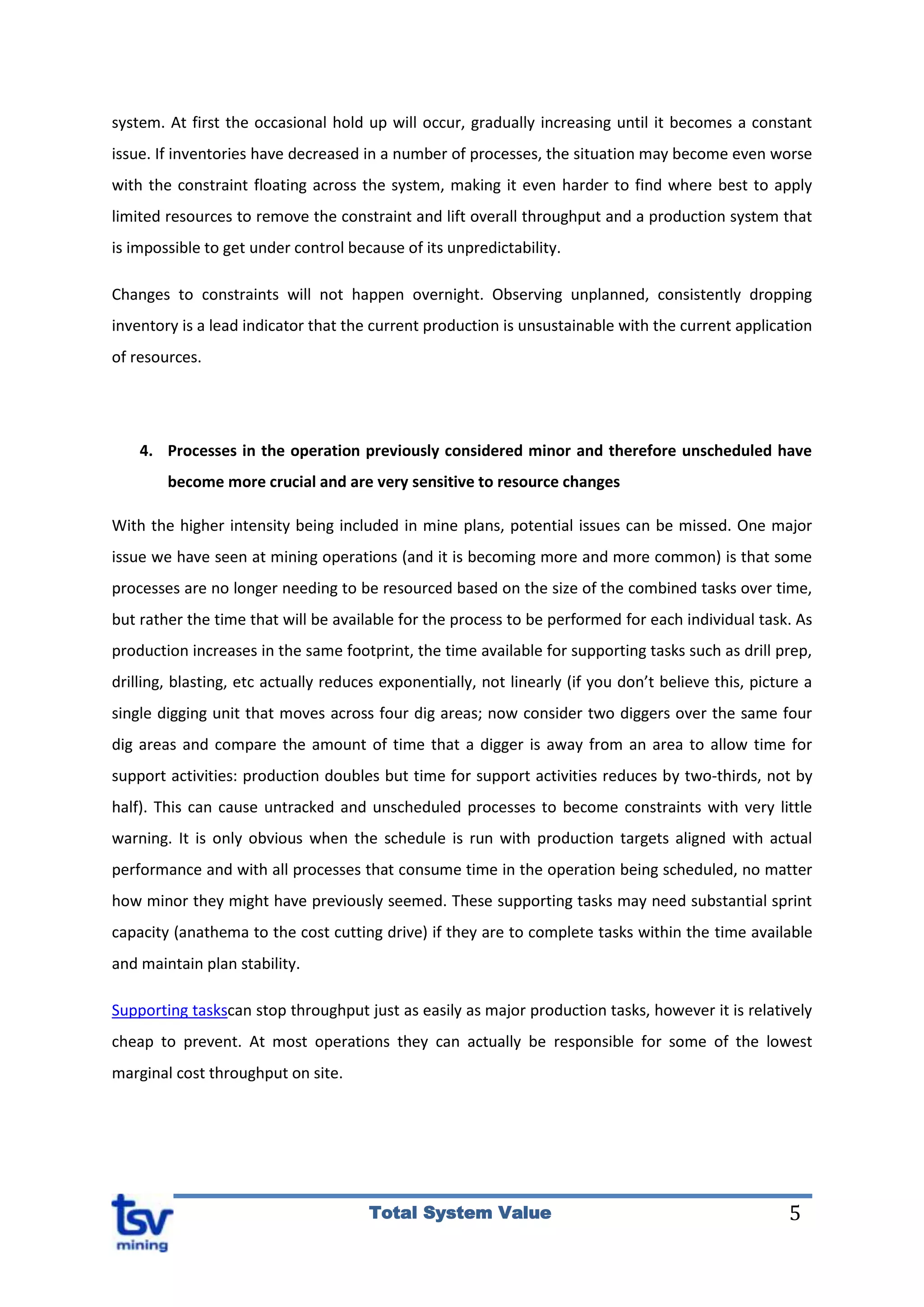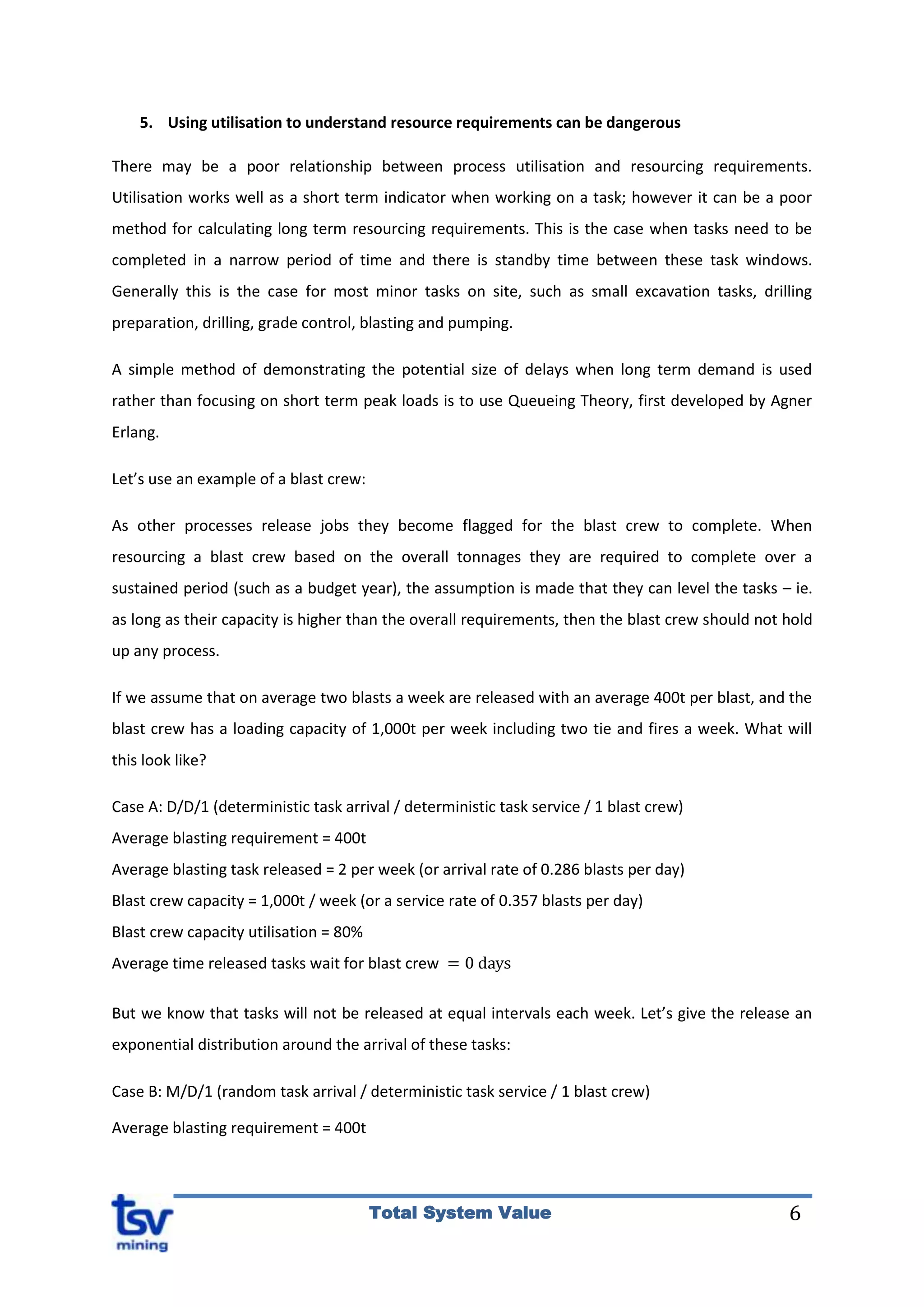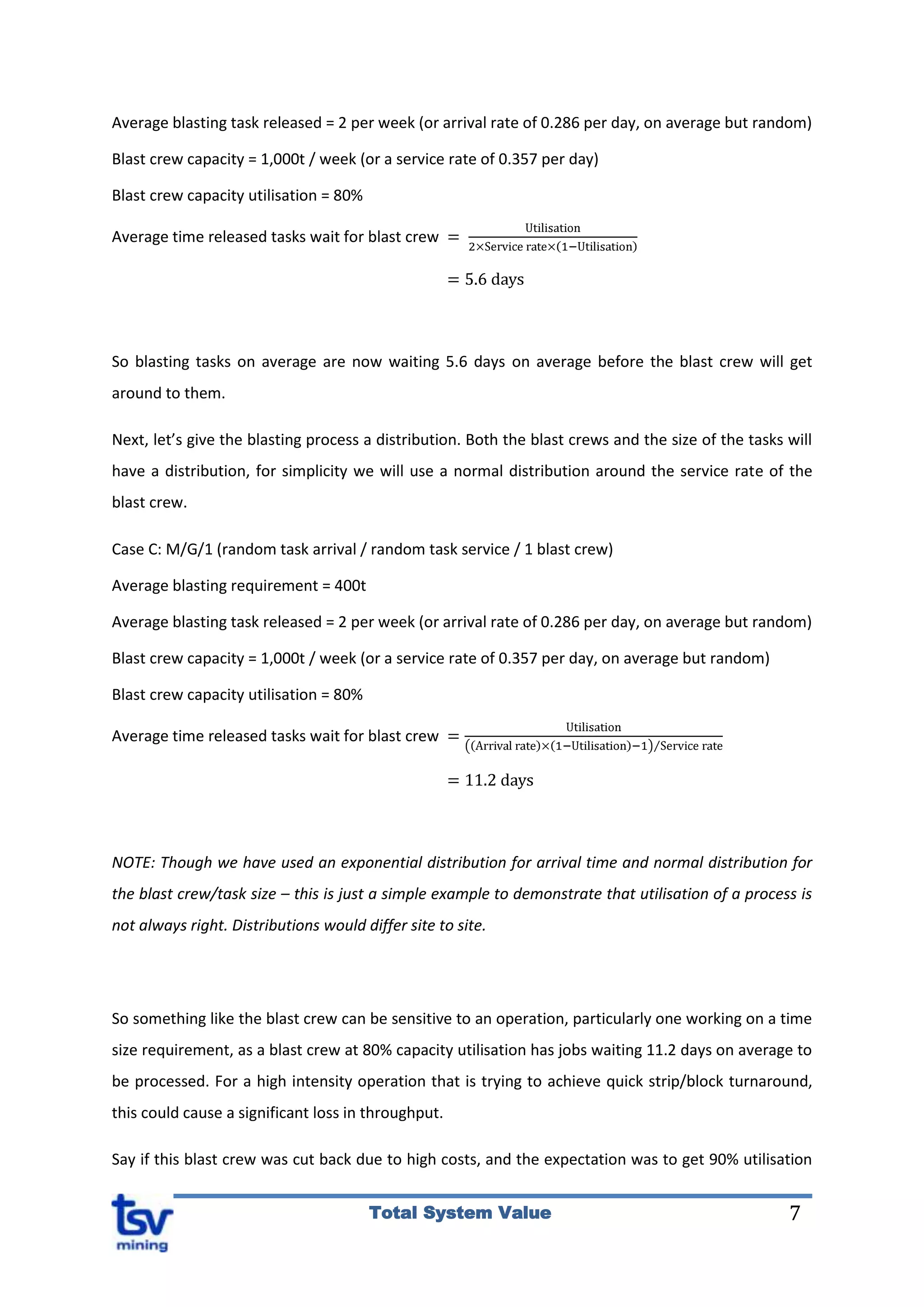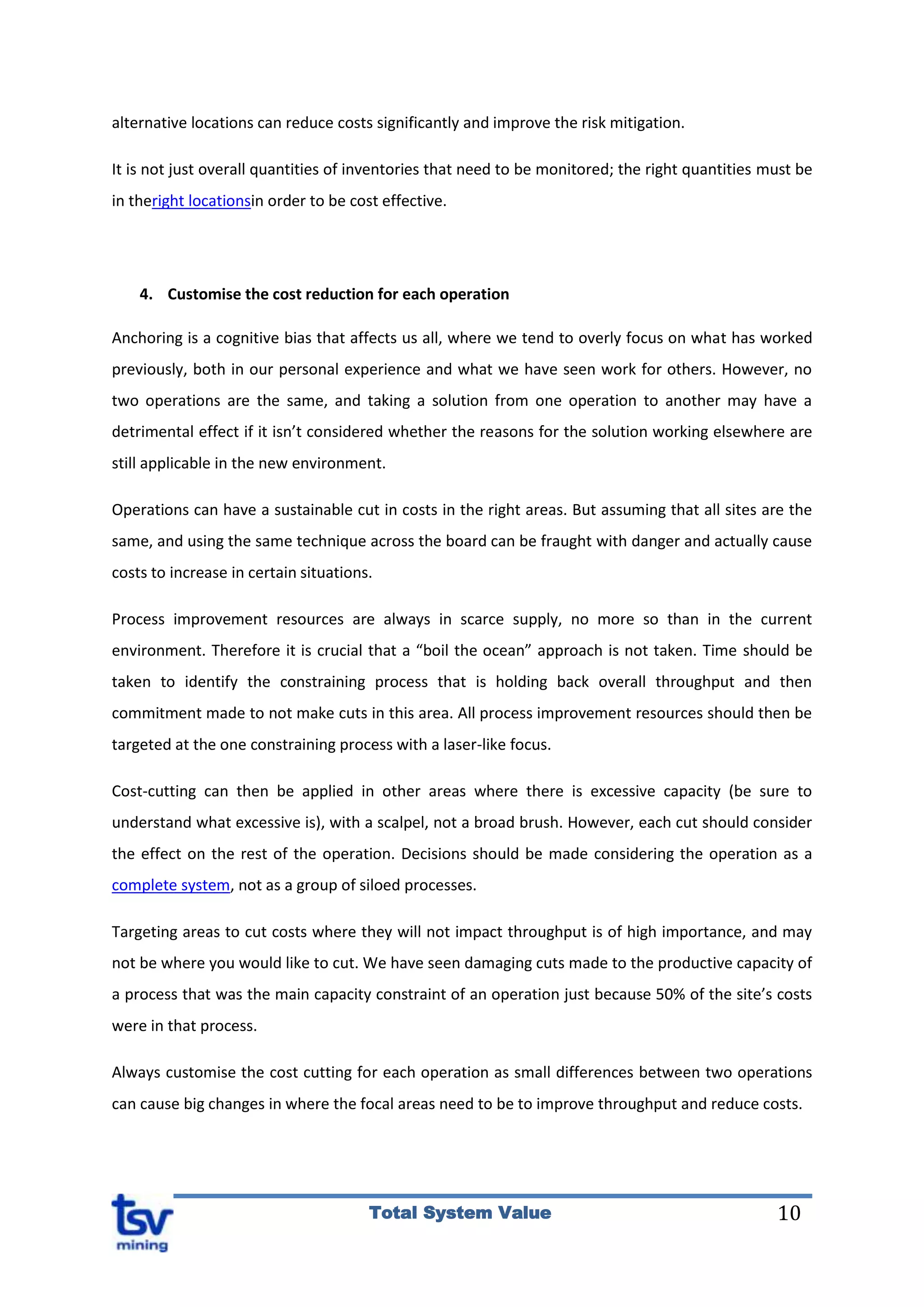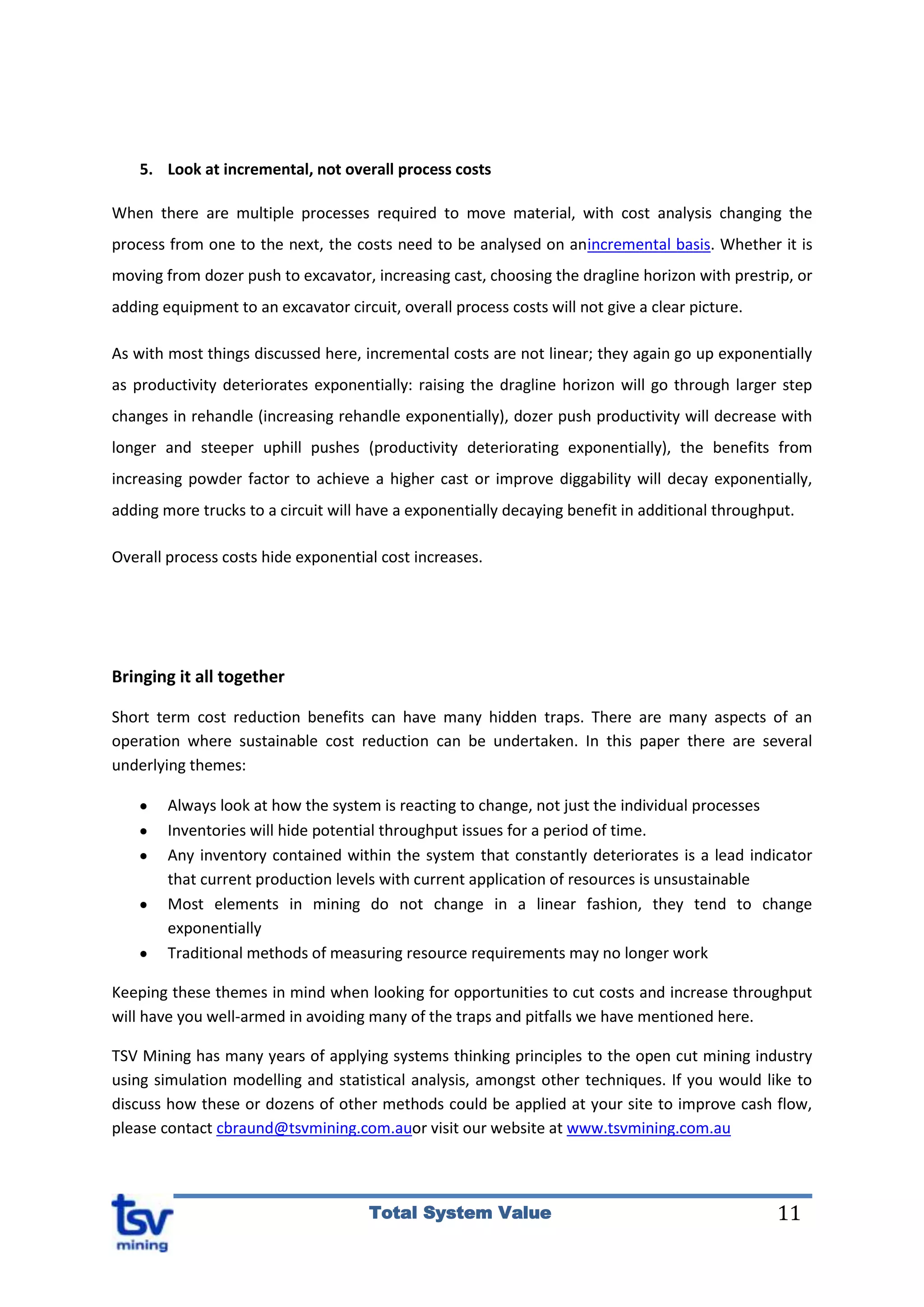The document discusses the challenges and hidden traps that mining operations face when implementing cost-cutting measures amid rising costs. It emphasizes the importance of understanding the non-linear relationship between production and costs, the risks associated with aggressive mine planning, and the detrimental impacts of reducing inventories without a comprehensive risk assessment. It suggests sustainable cost-cutting strategies such as renegotiating contracts, analyzing the effects of process improvements on the overall system, and managing variation in operations to enhance productivity and reduce unnecessary expenses.
